

This coming July, the University of Texas at Austin will be getting a new dean of the School of Architecture. Michelle Addington, who has spent the last eleven years teaching at Yale, will be leaving her post as the Hines Professor of Sustainable Design and taking over for Elizabeth Danze, who has been serving as interim dean at UT Austin since July 2016.
The School of Architecture at the University of Texas at Austin carries a longstanding tradition of being a leader of the field within the region, having been the first school in Texas to be accepted for membership into the Association of Collegiate Schools of Architecture back in 1925. In the '50s, the school became well-known for its innovative curriculum associated with the group, the Texas Rangers. The Rangers, comprised of a band of architects teaching under the direction of Harwell Hamilton Harris at the time, were known for their radical pedagogy and shifting the field towards the post-modern revolution. Inspired by the Bauhaus movement, the group attempted to synthesize modernism's exaltation of creativity and intuition with a commitment to tradition and architectural precedent.
Today, the school remains lauded as one of the top-ranked architecture schools in the country. Craig Dykers and Elaine Molinar of Snøhetta are both notable alums and the school repeatedly draws top names in the field such as Billie Tsien to their professorial posts. The School of Architecture had been headed by Frederick Steiner since 2001, but Steiner recently decided to accept a new position at Penn Design in light of a new law allowing concealed guns inside UT Austin's campus buildings. Prior to this, concealed weapons were legally permitted on campus, but not within the buildings. The school has had Elizabeth Danze serving as interim dean and, coming this July, will receive Michelle Addington as the new leader.
Educated in both architecture and engineering, Michelle has a strong background in the Ivy League tradition having taught at Yale for the past eleven years after previously serving thirteen at Harvard. Her academic focus has been on sustainable energy systems, advanced materials, and new technologies, and she is a champion of interdisciplinary approaches to architecture. In a statement issued by the school, Maurie McInnis, Executive Vice President and Provost, had this to say: "Michelle is an intellectual visionary and understands the critical and evolving role of design, architecture and planning. The interdisciplinary perspective she brings from academia and her professional career is unique. I am thrilled to have her join us and lead one of the top programs in the country. Her contribution and leadership will be a huge benefit to the university and the school, and most importantly, to our students."
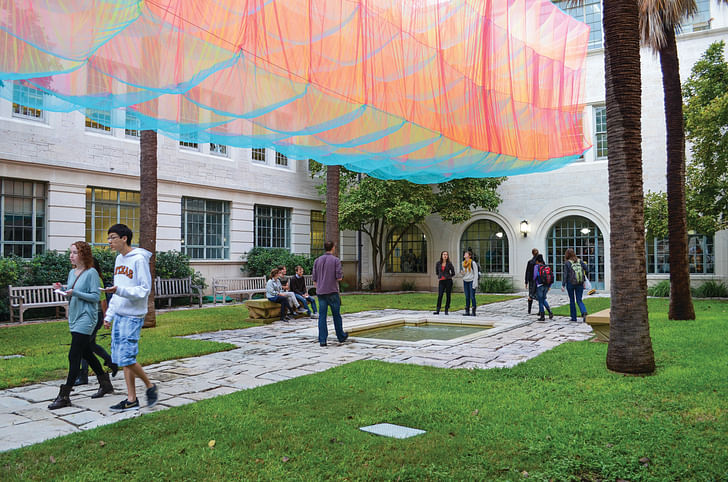
What do you see as UT’s pedagogical stance and how would you characterize their programming?
It is important to be clear that the School of Architecture at UT Austin encompasses more than architecture. It houses the full range of design disciplines addressing the built environment. Alongside undergraduate and graduate programs in architecture, the school has degree granting programs in Interior Design, Community and Regional Planning, Landscape Architecture, Urban Design, Architectural History, Historic Preservation, and Sustainable Design. While the architecture program as a unit is the oldest and largest of these disciplines, which might lead one to think that its pedagogy can be discussed independently, particularly given the seminal influence of Harwell Hamilton Harris and the Texas Rangers, the school has evolved its pedagogical 'owner' from architecture at the center to the collective disciplines as a complementary and coherent body. If design at UT during the 1950s had been the nexus between the formal and the phenomenal, as such inward looking, then design there now is seen as an agent in an expanded field, as such outward reaching. The design disciplines establish a stable armature that enables fluid and opportunistic programmatic connections.
Do you see this as a marked departure from the educational philosophy of Yale’s school of architecture, where you are currently?
Any discipline must subject itself to examination to qualify as an academic endeavor
The pedagogy and approach are markedly different from Yale for two reasons. The first is structural: Yale only has architecture, primarily as a graduate professional degree. The second is philosophical: Yale is, at its core, committed to the autonomy of architecture as embodied through the act of building (whether intellectual, virtual or physical). I don’t see the differing structures and philosophies as competitive or even as alternative; rather they are complementary viewpoints that integrate to form the design disciplines writ large. Any discipline must subject itself to examination to qualify as an academic endeavor, and we depend on each and every school to bracket content and introduce methods to create a richly varied array of lenses through which to examine what we do and how we think about design.
What kind of student do you think would flourish at UT and why? Do you see this shifting during your time here?
I am quite new to UT Austin, so can only frame my answer through my interactions with the students and graduates that I have had an opportunity to meet. I have found them to be fiercely independent thinkers and yet committed to engaging in matters of societal impact. While many of the Ivy League students are carefully crafting their rhetoric—what they write and say about design—the UT students I have encountered are more interested in agency—what design produces and accomplishes. I hope this essence of the UT student never changes. Rather than a shift, I would want to build upon it as a foundation so that our agency is even more productive and powerful when positioned through a rigorous argument.
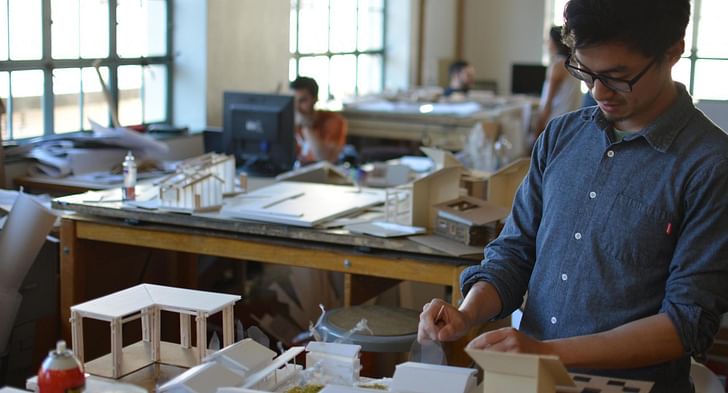
What do you see as the biggest challenge, academically and professionally, facing architecture students today?
There are many challenges facing design students—from the cost/return ratio of education to the employment volatility of the profession to the lack of clarity as to what actually constitutes the core of the disciplines. While many of my contemporaries would suggest that the underlying problem is one of communication, i.e., that we haven’t done our job in convincing the public at large of our value, I disagree. Don’t get me wrong here, I fully support the work that Peggy Deamer and others are doing on labor and equity in architecture. But we are letting external issues obscure the deep work that needs to be done within academia. Is design a discipline, a vocation or an avocation? We have cobbled together aspects of all three into our respective curricula such that it is unclear as to the constituent questions, objectives, methods and content. There are many who lament the loss of a singular authority to bring clarity and direction, and I appreciate the sentiment, although I do question 'which' authority. That of a philosophical frame, of a seminal figure, of a signature style? I am more interested in what persists as these temporal authorities ebb and wane. We need to critically and collectively take a stance as to what comprises a constituent core, as this is what establishes the stable armature that enables the more fluid and active engagement in contemporary questions and issues.
First and foremost, we must address the welfare of the students in our degree programs
But, first and foremost, we must address the welfare of the students in our degree programs. Every administrator, every professor, is acutely aware of the financial burden placed on students. And, while we can continue to hope that taxpayers and generous donors will step up to help cover increasing costs, we have to recognize that those students in the lower economic strata will continue to be disproportionately burdened. As stewards of the design disciplines, whether educator or practitioner, we have an obligation to reduce costs and increase value. I am dismayed every time I hear a colleague or contemporary shrug off the question about finances by conceding that architecture is just more expensive to teach than other fields. This may well be so, but it is not sustainable and we must ask hard questions and become much more strategic about the way that we teach and the tools we require. The discipline is diminished when full participation is denied to those who cannot afford it. I must say that one of the primary reasons I was drawn to UT Austin is due to their commitment to an affordable education. It has one of the lowest tuitions of any top-ranked school of design in the United States.

Do you have a method or process for deciding how to integrate what you see in practice into academia?
Having worked on both sides of the aisle, I wouldn’t say that the goal is “to integrate what we see in practice into academia.” I do not think of academia and practice as stages, with practice as the final stage, but rather as modalities of the larger discipline. Now the question of how the two should be integrated is omnipresent and longstanding, and it will continue to be the foundational question driving the curriculum. A common approach to bringing practice to bear in academia—the use of precedent or case study—is one that I have increasingly questioned in my own teaching and research.We need a relationship that pushes back rather than reflects Whether used as a studio problem, an illustrative example, or as an analytical model—the real life scenario often becomes practice 'lite' when brought into the curriculum. It will be stripped of issues considered to be extraneous to the studio/course content and cleansed of the messiness of conflict and intractability. As a teaching tool, it is meant to generalize processes, decisions and strategies into a sequence of best practices. By bringing these into the curriculum in this simplified manner, we end up reifying the generalizations and trapping ourselves in that the way we do things defines the way that we think about things. We need a relationship that pushes back rather than reflects, and one where the unique circumstances and specifics of the real problem are what we examine, not as forming a replicable exemplar but as a complex network of interferences, trade-offs and compromises.
How do you familiarize yourself with trends within the architectural profession and academia, and adapt these observations into programming and student policy?
In my case, I have to be actively engaged, whether in-situ, or through discourse, whether written or spoken. The aspect of active engagement demands criticism and challenge. The more my views and beliefs are challenged, the more I learn. Indeed, I tend to learn the most when unseated from my comfort zone and placed in unfamiliar surroundings. When I was a student at Harvard, I used to go the medical school to sit in on grand rounds. I also joined a group in electrical engineering at MIT specializing in micro machines. Most of the time I was completely at sea, but the experiences provided me with a small window into how other disciplines framed their content and questions. As a faculty member, I stay engaged, and off-center, through my work with developing countries, particularly with their governmental institutions, but also by visiting every office and manufacturing facility that I can and finding ways to participate in conversations/symposia/collaborations that reach beyond my areas of expertise. I am not suggesting that my personal approach is a model, but I do believe that in a world of rapid change and even more rapidly proliferating content, we need to be more nimble at shifting from context to context, and to learn how to cultivate intersections and disjunctions for questions.
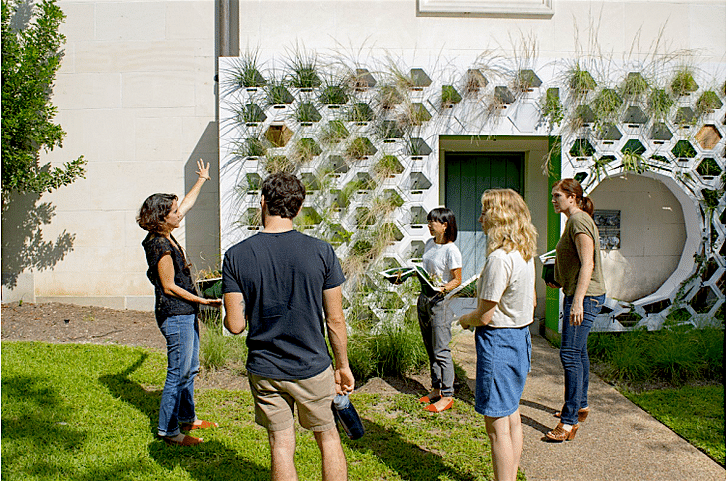
How important do you think it is for the leader of an architecture school to either already have been or still to be a practicing architect?
Given the range of disciplines at UT Austin, I suppose you could also ask whether the dean should be a practicing landscape architect or interior designer or historian or planner or urban designer… I always find this question a bit surprising, as there are fewer and fewer fields where this would be such a central issue. I think that part of the desire for a practitioner is a holdover from the mid to late twentieth century when authority was embedded in the dean or the chair. The authority these individuals brought to academia was through the embodiment of their practice into the ethos of their respective schools. To be an effective leader in the design fields, one must have a stake in the gameThe discomfort that many have had about a non-practitioner stems as well from that same time period when many universities reacted to that singular authority by bringing in administrators from non-design disciplines to rein in programs. There is now a diverse slate of leaders with wide-ranging educational backgrounds and occupational experiences, and I don’t think you will find any correlation between a specific background and leadership ability. Schools must understand their own needs and potential and find the individual who can most effectively provide the leadership to realize that potential. I do believe, however, that to be an effective leader in the design fields, one must have a stake in the game. Whether that stake comes from the research of an architectural historian or the projects of a practicing architect is not nearly as important as the individual’s commitment to furthering the disciplines and providing the highest quality experience for students. And, on a more pragmatic note, we must recognize that universities in the 21st century have unprecedented challenges and complexities in their governance and operation. Regardless of whether one identifies as researcher or practitioner, being a dean is a full-time job.
You are known as a champion of interdisciplinary approaches within the field, how would you describe the relationship between architecture and the other departments at UT and do you plan on doing anything differently to help nurture future collaborations?
The School of Architecture at UT Austin has a long history of interdisciplinary education and already has robust relationships across the university. As a current example, the school is directing a U.S. Department of Transportation consortium on mobility in mega-regions, which not only extends to multiple departments, but also to several other universities. Rather than thinking of this consortium as extra-discipline—as a discrete and particular instance of research application beyond the normative boundaries of application—we need to begin to recognize such projects as paving the way for how the design disciplines operate in an expanded field. Inter-disciplinarity is not about folding other disciplines into design, neither is it about design inserting itself into other disciplines. Rather, it is about mining the cracks and gaps between the disciplines to construct new fields. If there is any endeavor that design is eminently suited for, it is to lead this construction. This is not ancillary to design, it is design.
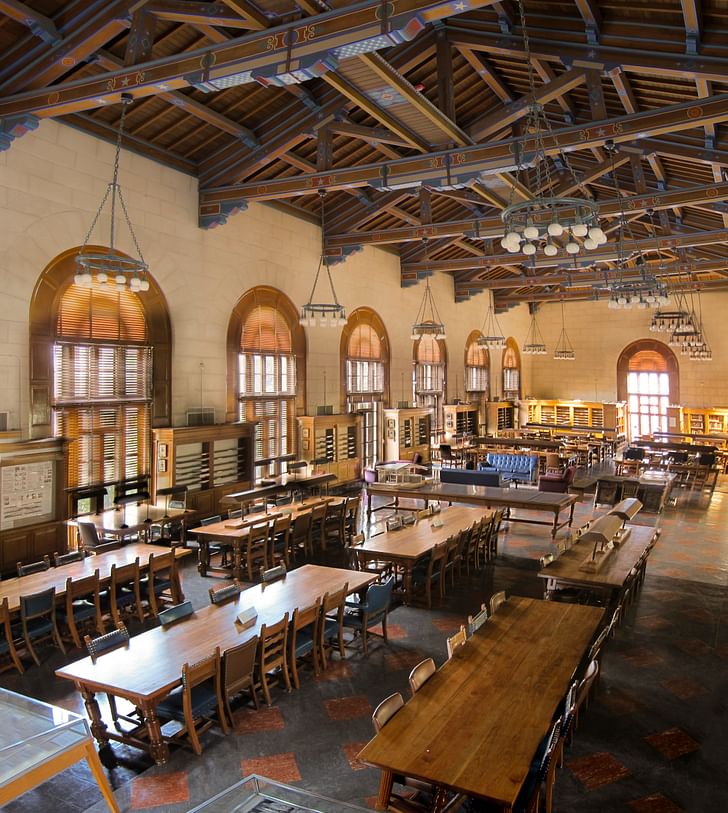
What from your time at Yale do you plan on importing to UT?
Since I officially begin my new position at UT Austin in July, it would be premature to suggest what I want to import. But, I can say that one aspect of Yale that I have admired the most is the sense of community that exists at the School of Architecture and across the University. Students, faculty, staff and alumni share in this community, which is simultaneously supportive to those in need and powerful as a collective body.
By the end of your tenure at UT, what do you hope to have changed?
Although I have been speaking of the university’s programs as the collective design disciplines, the direction for the school as a unified institution must balance and build upon the differing needs and requirements for each discipline as they look to futures that may bring unique changes and challenges. An academic’s primary loyalty is to the betterment of his/her discipline, and this can occasionally be at odds with how schools self-identify. The School of Architecture at UT Austin is already well established and well-positioned in these different areas, and is internationally respected for the quality of its faculty, students, programs and research.Many of the pressing issues facing our society today are omnipresent and intensely debated in Texas Coming in as an outsider (I spent the last eleven years at Yale, after being at Harvard for thirteen years), I have much to learn about the school and look forward to initiating the conversations that will develop into the school’s vision and direction. It would be inappropriate for me to outline a vision for Archinect before sitting down with the faculty. Nevertheless, I do see unique opportunities for the school, especially due to its position in the capital of Texas. Many of the pressing issues facing our society today—relations with other countries, the rights and welfare of underrepresented populations, questions of identity and regionalism, the impact of environmental and climate change, shifting demographics, and conflicts between public good and private rights—are omnipresent and intensely debated in Texas. The design disciplines alone cannot settle these debates or solve the resulting problems. But, we have an opportunity as well as an obligation to play a strategic role as society struggles to coordinate a path forward. We have profound responsibility for determining the physical fabric of society, a fabric that provides first and foremost for the health, safety, connectivity and welfare of all populations, yet also manifests as the tangible repository for a society’s values as well as the scaffold for how cultures define themselves and their aspirations for the future. As such, we are uniquely suited to convene differing constituents and points of view, to map contested boundaries and territories, to negotiate and pose multiple scenarios and interventions. If I can only accomplish one thing during my tenure at UT Austin, I hope that it will be to give voice to the value and potential of design in the world as it is to bring about the world that could be
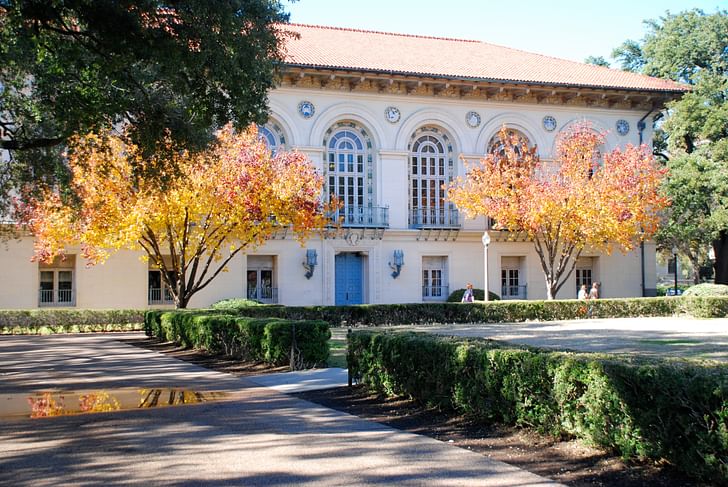
Your predecessor, Fritz Steiner, said that his decision to leave UT was based solely on a new law that allowed open carry on campus. Did this affect or complicate your decision-making process in any way?
Just to be clear, S.B. 11 doesn’t allow open carry on campus, but it did provide for concealed carry on campus by license holders subject to some discretionary regulation by public universities. When the campus carry law was being debated and implemented last year, I followed the issue closely. It was clear that many in the campus community were concerned about their safety and how the state law might impact the university, and understandably so. What I do know is the administration was very thorough in creating policy that prioritized safety, and I would not be taking on this position had I not believed this to be so. I recognize this remains a very important issue, and I will always advocate for the safety of my faculty, students and staff first and foremost. If we are truly committed to the ethical stewardship of the built environment, then I believe we should be inserting ourselves into these debates to ensure we help protect the most vulnerable members of our society.
How do you teach students a code of ethics in architecture?
The difficulty in teaching ethics is that we tend to parse it according to cultural, political, religious, social and even professional constructs. From a set of principles, it becomes a code of conduct that is then codified into specific rules. Each group has its own rules, which can lead to confusion and conflict. We should never encounter a situation where someone questions whether or not a particular behavior is ethical. But we do. The overarching principles themselves are universal and unambiguous, yet become open to interpretation and often ambiguous when put into practice. Ethics cannot be treated as a special subject or as an honor code or as content that is taught in a professional practice course. We need to be clear that we are governed by the larger principles, and we need to demonstrate their application in every course, in every activity.
No Comments
Block this user
Are you sure you want to block this user and hide all related comments throughout the site?
Archinect
This is your first comment on Archinect. Your comment will be visible once approved.